Each owner wants his ardent plot to look beautiful and to some extent exotic. In addition to the objects of landscape design, such as swimming pools, alpine slides, garden furniture, the appearance of the loft is determined by plants. Flowerba recently, gardeners are paying more and more attention, as properly chosen flowers can delight the eye with their bloom not one day, stressing the entire idea of \u200b\u200ba holistic design. Using plants with different flowering period and buds, you can create excellent compositions.
One of the most popular colors that are grown on the outdoor ground is Estoma. It is equally growing well both at home (in pots) and in the open soil. About how to properly grow by the eustoma on the flower bed of the household site - further in the article.
What is a eustoma
This plant has become known in Europe relatively recently. As an appearance in the old world, Estoma is obliged to the Irish biologist Patrick Brown. Perhaps, precisely because of this, this flower is also called the Irish Rose. Not revealed completely bud eustoma resembles a rose. True, this similarity ends. The birthplace of the plant is the Central American region and the Caribbean countries. This fact identified the "love" of Estoma to the warm and humid climate.
The main characteristics of the culture:
- Lisianthus flower, and this is another name, is considered a perennial plant. However, mainly in the open soil it is cultivated as annual. This is due to the fact that Eustoma moves very badly to freeze, and in extreme conditions rarely blooms twice.
- The plant has a rather long stem, the height of which reaches 0.9 - 1.2 m. Approximately from its middle of the Estoma begins to branch, giving several processes. Comprehensiveness are also formed on them, so one escape of the plant gives several inflorescences. This was the cause of the great popularity of the flower among the flower flower, which are increasingly growing to the eust. By the way, in a cut form, under favorable conditions, it can stand in a vase for up to 2 weeks.
- Special Charm Estoma betray her leaves. Preferably, they have an elliptical shape and a husky shade. Often this plant for the shape of the stem and leaves is compared with the carnation, but, despite the similarities, they are still different.
- Eustoma flowers are rather large, reach up to 8 cm in diameter. At the same time there are a large number of colors and shades. Eustoma terry is greater popular among flower beds.
The cultivation of the plant in the open soil began relatively recently. Before this Estoma was predominantly a potted plant. With the appearance of varieties for open cultivation, it began to be more successful to raise in the oranges, and then at the flower beds.
Estoma varieties
Plants for potted growing and for open soil differ. This is due to various cultural conditions. Flowers for homemade cultivation are mostly low, the height of their stem does not exceed 70 cm. And for open soil, more tall plants are used.
Among domestic varieties of plants are the most popular are:
- Low grade, perfectly suitable for growing in pots. It has flowers predominantly pink color with lots of shades.
- Sorts with stem size no more than 20 cm, with funnic inflorescence of various colors.
- Also, grades and mermaid are also very popular.
For growing clubs and in greenhouses, the following eustoma varieties are used:
- Beautiful flower, with a large palette of flowers and shades. At the same time, there are both dual-tonne and monotonous coloring of buds. Unlike other eustoma varieties, designed to land on the outdoor soil, does not differ in the high height of the stem.
- Sort with a length of the stem up to 90 cm and a large variety of colors of buds.
- Early variety of plants. His bloom begins for 2-3 weeks before the rest. At the same time, Aurora has the highest stem to 1.2 m, and large flowers of blue, blue, white and pink colors.
- This variety is distinguished by its unpretentiousness, therefore it is quite popular among the flower water for the outer fit. It has high stems and a large range of colors and shades.
Estoma seedling landing
Since the plant is considered tropical, it should not be sulking in our latitudes to open soil. Eustoma seedlings are grown in pots in more favorable conditions, after which they transplanted the flower on the flower.
Eustoma seeds are quite small. By 1 gram of weight they account for more than 20 thousand pcs. With proper processing of seeds before sowing, the material is more than 50%. Such processing that reduces the incidence of plants, the effect on them of harmful fauna (bacteria, mold, fungus), seed manufacturers are carried out. Therefore, buy the latter better in specialized stores. The result will be better.
You can hang up the seating material in both separate pots and large boxes.
The order of planting culture is as follows:
- Before sowing, it is necessary to prepare the ground. The most optimal soil for the cultivation of seedlings will be a mixture of peat and humid crust in equal proportions. If there is no one, you can use a specialized composition for flowering plants. It can be bought in any flower shop.
- After the soil is prepared, we can start sowing Estoma. Before this, the soil must be smoaping slightly. Then the seeds are poured onto its surface and is covered with a small layer of soil.
- The distance between the plants should be at least 30 cm. You can put 2 semen into a small well. If both, the smaller and weaker plant is removed.
- The pot or box should be covered with a thin polyethylene film, while creating conditions for normal air circulation. To stimulate the growth of seedlings, artificial light can be used for 10-12 hours per day. To do this, you can hang the lamp of daylight over them.
- The room temperature where seedlings will be placed, should be within 19-22 ° C. If everything is done correctly, after 2-3 weeks, shoots will appear.
- Water seedlings needed regularly, however, one should not overcoat the soil. It is best to resort to uniform spraying of moisture on the upper layer of the soil, not allowing the latter to rehabilitate. After seedlings appear, they can be set on the window on the south side to increase the amount of natural lighting.
When to sow eustomas? So, if the growing of Estoma in greenhouses can be carried out yearly, regardless of sowing time, then for the landing in open ground, seed seeds should be seeded at the end of January - early February. Only in this case, you can wait for the flowering of Estoma in the current year. Plant flourishes only 3-4 months after the appearance of germs. When transplanting seedlings into open ground, the interval can be increased.
Picking and planting seedlings Eustoma in open ground
The order of work at this stage is the following:
- When the plant will have a pair of full leaves, it is possible to change it a bit. Spray continue with large intervals. The pickup and transplantation of seedlings in the ground is produced with a favorable exterior atmosphere and normal state of plants. They must be faster and have a minimum of two pairs of full-fledged sheets.
- Estoma seedlings can only be seeded in a good warm soil. Usually do it in the middle or end of May, when the probability of frosts will decrease to zero. Since Estoma is a tropical plant, a decrease in temperature below 0 ° C may be dedlicious for its seedlings.
- This plant is light-minded, however, does not like direct sunlight. Therefore, for Eustoma in the garden it is better to choose a little darkened place with scattered light. Special attention should be paid to the soil. It must be rich in mineral and organic nutrients enough to ensure normal growth and flowering plants.
- Pretty plants must be carried out during the flowering period of Estoma. This uses complex fertilizers in liquid form. You need to select them for colors. The fertilizer is divorced at the rate of 15 mg per 10 liters of water. It is necessary to pour up the feeder for no more than 2 times during flowering periodicity 1 time in 2 weeks.
- When watering a planted plant, moisture getting into its leaves should be avoided. This may cause diseases.
Diseases and pests Estoma
The cultivation of Eustoma in the open ground is always associated with the threat of infection with various diseases and the impact of pests. Among the most common diseases of this plant can be allocated:
- Puffy dew.
- Gray rot.
- Fusariosis.
The main reason for the appearance of these diseases is the wrong watering of plants. It may be irregular or excessive moisturizing, which leads to the appearance of pathogenic fungi.
The fight against these diseases is the proper watering and processing of soil with special antifungal solutions, or spraying the plant itself by Fundazole. Such treatment does not prevent with frequent rains when the earth cannot dry out for a long time.
Another disease that often amazes the plant of Eustoma with improper care is a black leg. Prevention of this disease lies in the treatment of seedlings with epinoma or zircon. These drugs also stimulate the growth of plants.

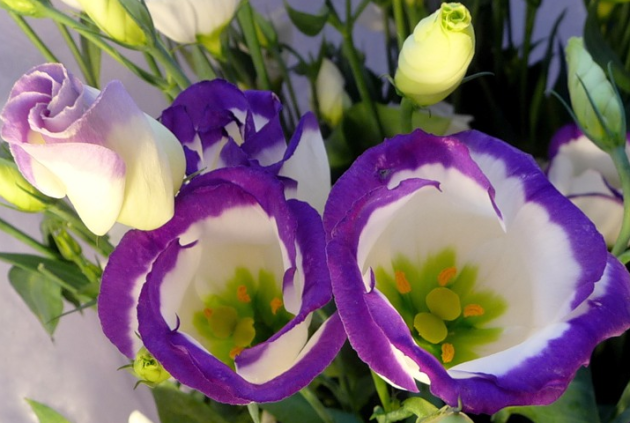
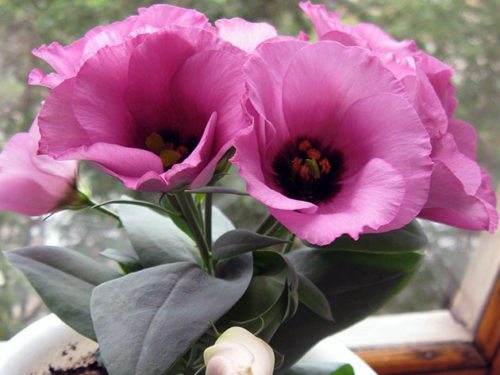
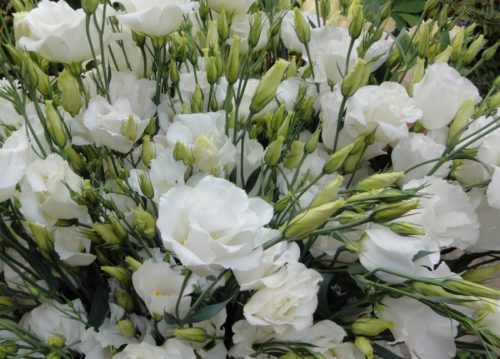
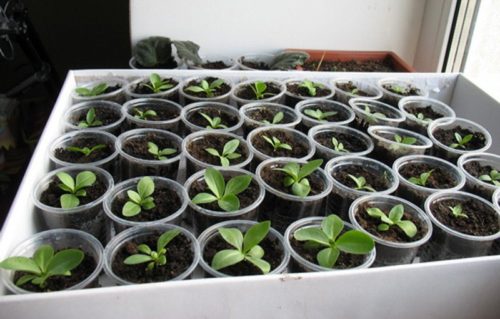
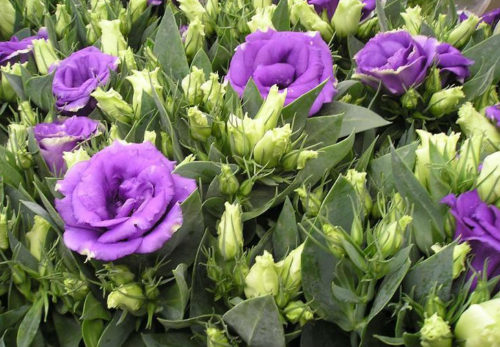
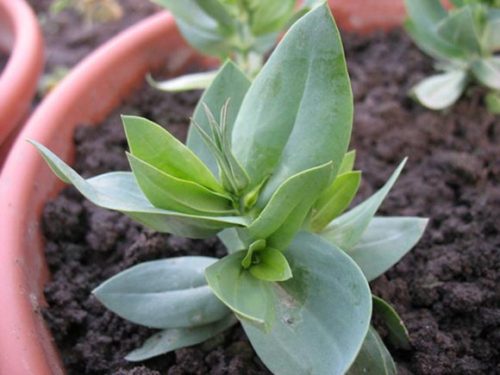
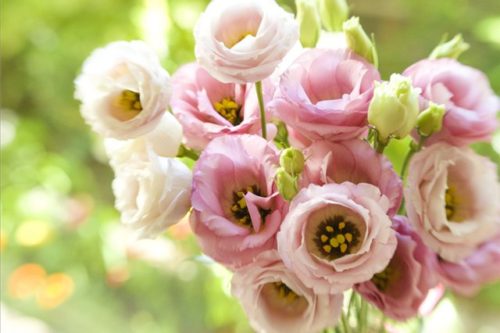
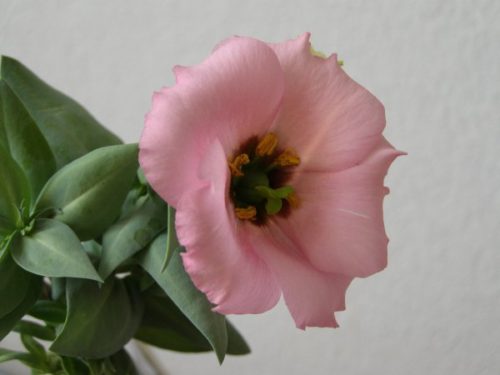
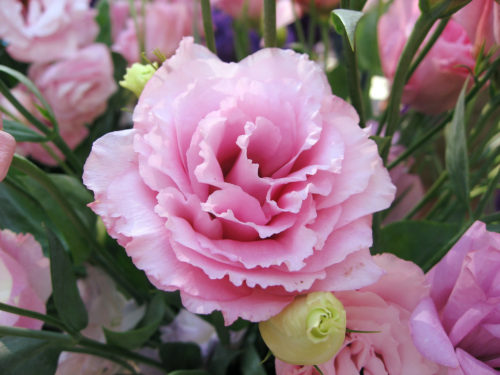
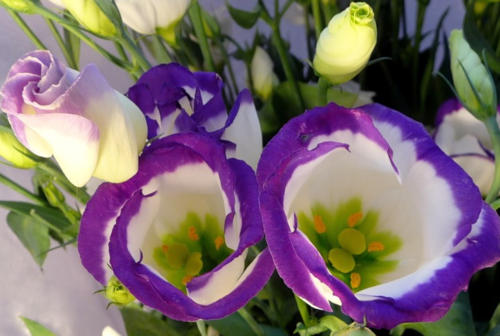
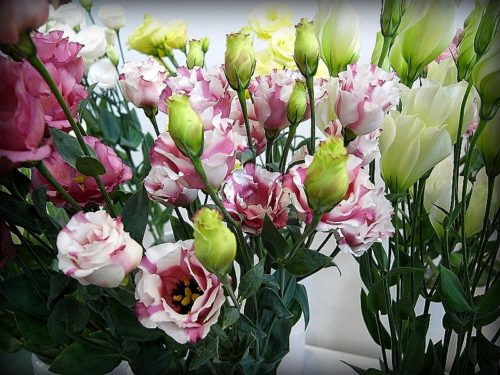












 Start a discussion ...
Start a discussion ...